Toyota wisely expanded its portfolio of hybrid vehicles this year, and the results are worth writing home about. Through the first seven months of 2012, about 6,300 Prius units were sold in Canada, compared to just 1,100 during the same period in 2011.
All of a sudden, there are a lot more hybrids on the road.
Besides the subcompact Prius c and the wagon-esque Prius v, the “regular” Prius (or Prius Liftback) is now offered in a Plug-in version, or what we call a PHEV. What’s the difference, you may ask? Here goes.
The 2012 Toyota Prius Liftback is equipped with a 16-valve, 1.8L 4-cylinder engine that develops 98 hp and 105 lb-ft of torque. It also features an 80 hp electric motor that provides 153 lb-ft of instant torque. Together, and managed by a continuously variable automatic transmission, they produce a combined 134 hp.
The 2012 Toyota Prius Plug-in gets exactly the same powertrain. What differs, actually, is the battery pack.
The regular Prius is fitted with a nickel-metal hydride battery, while the Plug-in gets a higher-capacity, lithium-ion unit. Instead of an EV mode range of about 2 km in the regular Prius, the Plug-in model can travel up to 22 km on electric power alone, even at highway speeds.
Plug the car in a regular household 120V outlet, and you’ll recharge the battery pack in about three hours. If you hook up to a 240V charging station, a full charge is yours in an hour and a half.
The system works very well. I travel 40 km from my house to the office every day, which means half my commute is performed without a drop of gasoline. Keep in mind, though, that if you mash the go pedal in EV Mode, the Prius Plug-in will fire up the gas engine, figuring you really need the extra power.
When the battery pack is depleted, the gas engine steps in virtually seamlessly. At the end of my 40-km jaunt, the fuel economy meter in our high-mileage, pre-production Prius PHEV read 2.8L/100km, which is pretty good and about 1L/100km less than what I’d achieve in the regular Prius Liftback. Fuel economy equivalent ratings have been calculated at 2.0/1.9 Le/100km, city/highway respectively.
The Plug-in hardware adds about 120 lbs to the curb weight of the car, and the fuel tank is reduced from 45 to 40 litres. When you do the math, a real-world driving range of between 1,100 and 1,500 km is possible provided you plug the car in at every chance you get.
However, before you sign on the dotted line for a Toyota Prius Plug-in, know that it costs $35,700 before you consider taxes, freight and delivery charges as well as government incentives. That’s -- ahem -- ten grand more than a base $25,995 Prius Liftback.
As such, the Prius Plug-in achieves outstanding fuel economy, and plugging in the car at home or at work is a simple and relatively quick way to get 100% electric mileage out of your daily commute. However, paying an extra $10,000 to save about 1 litre of fuel for every 100 km or so doesn’t quite seem like an interesting trade-off.
All of a sudden, there are a lot more hybrids on the road.
Besides the subcompact Prius c and the wagon-esque Prius v, the “regular” Prius (or Prius Liftback) is now offered in a Plug-in version, or what we call a PHEV. What’s the difference, you may ask? Here goes.
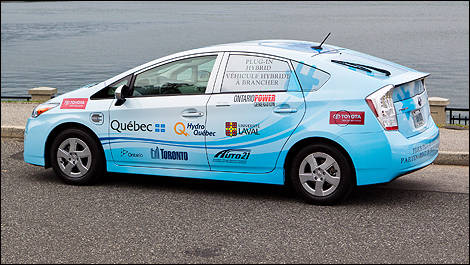 |
| Besides the subcompact Prius c and the wagon-esque Prius v, the “regular” Prius (or Prius Liftback) is now offered in a Plug-in version, or what we call a PHEV. (Photo: Toyota) |
The 2012 Toyota Prius Liftback is equipped with a 16-valve, 1.8L 4-cylinder engine that develops 98 hp and 105 lb-ft of torque. It also features an 80 hp electric motor that provides 153 lb-ft of instant torque. Together, and managed by a continuously variable automatic transmission, they produce a combined 134 hp.
The 2012 Toyota Prius Plug-in gets exactly the same powertrain. What differs, actually, is the battery pack.
The regular Prius is fitted with a nickel-metal hydride battery, while the Plug-in gets a higher-capacity, lithium-ion unit. Instead of an EV mode range of about 2 km in the regular Prius, the Plug-in model can travel up to 22 km on electric power alone, even at highway speeds.
Plug the car in a regular household 120V outlet, and you’ll recharge the battery pack in about three hours. If you hook up to a 240V charging station, a full charge is yours in an hour and a half.
The system works very well. I travel 40 km from my house to the office every day, which means half my commute is performed without a drop of gasoline. Keep in mind, though, that if you mash the go pedal in EV Mode, the Prius Plug-in will fire up the gas engine, figuring you really need the extra power.
When the battery pack is depleted, the gas engine steps in virtually seamlessly. At the end of my 40-km jaunt, the fuel economy meter in our high-mileage, pre-production Prius PHEV read 2.8L/100km, which is pretty good and about 1L/100km less than what I’d achieve in the regular Prius Liftback. Fuel economy equivalent ratings have been calculated at 2.0/1.9 Le/100km, city/highway respectively.
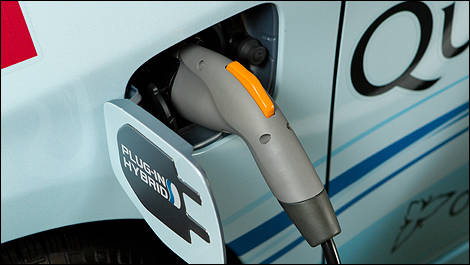 |
| Plug the car in a regular household 120V outlet, and you’ll recharge the battery pack in about three hours. (Photo: Toyota) |
The Plug-in hardware adds about 120 lbs to the curb weight of the car, and the fuel tank is reduced from 45 to 40 litres. When you do the math, a real-world driving range of between 1,100 and 1,500 km is possible provided you plug the car in at every chance you get.
However, before you sign on the dotted line for a Toyota Prius Plug-in, know that it costs $35,700 before you consider taxes, freight and delivery charges as well as government incentives. That’s -- ahem -- ten grand more than a base $25,995 Prius Liftback.
As such, the Prius Plug-in achieves outstanding fuel economy, and plugging in the car at home or at work is a simple and relatively quick way to get 100% electric mileage out of your daily commute. However, paying an extra $10,000 to save about 1 litre of fuel for every 100 km or so doesn’t quite seem like an interesting trade-off.
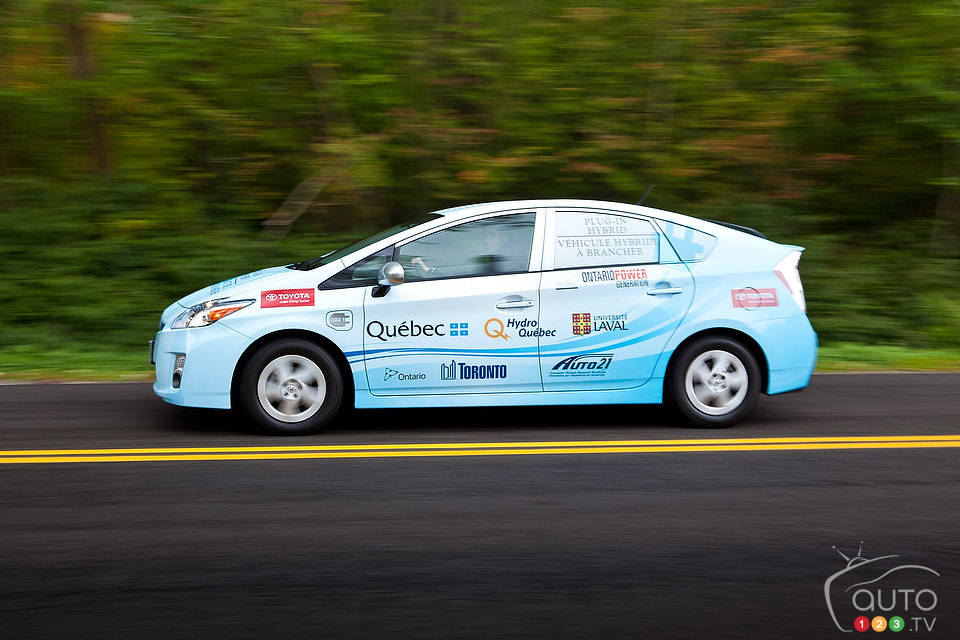
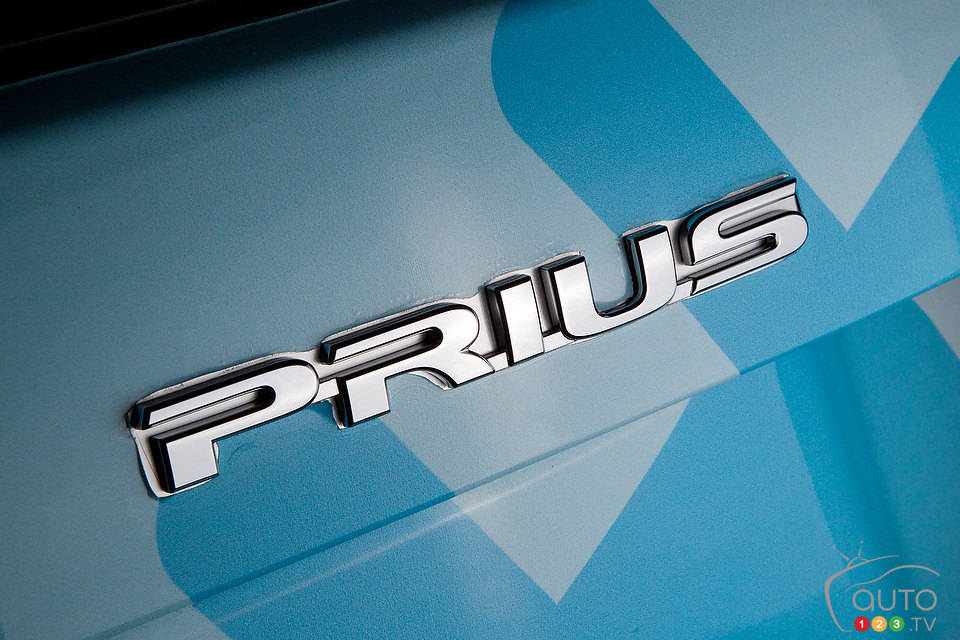
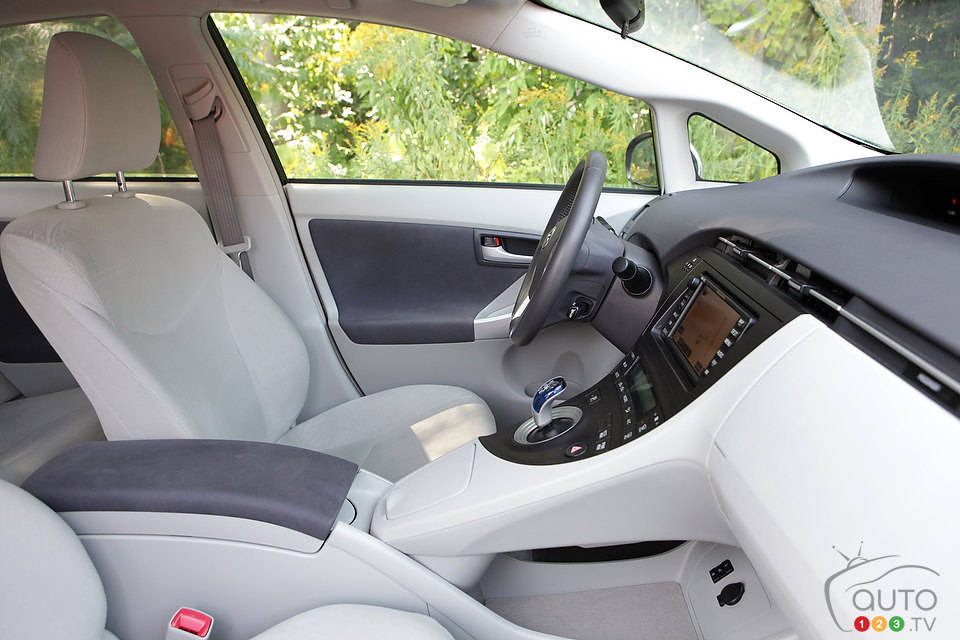
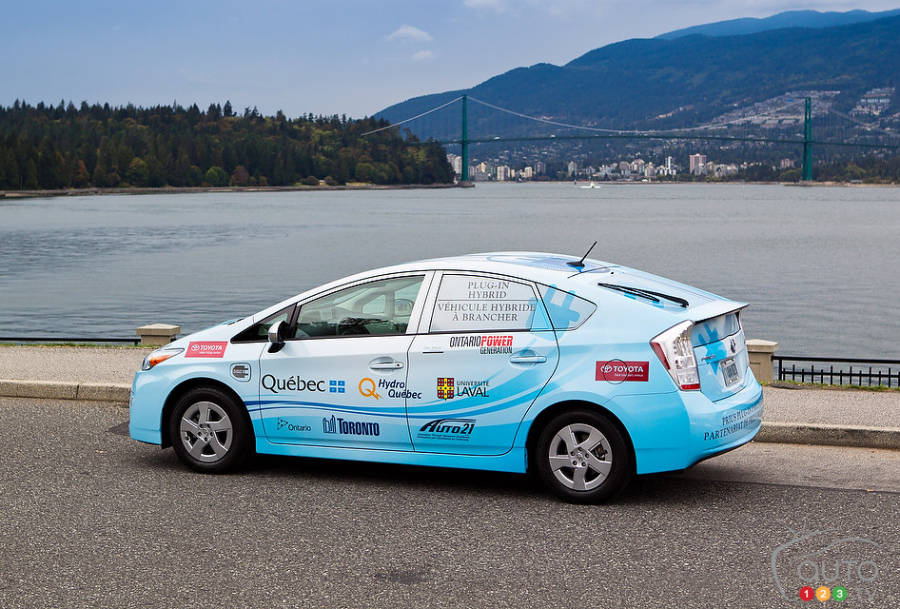
Article Gallery


